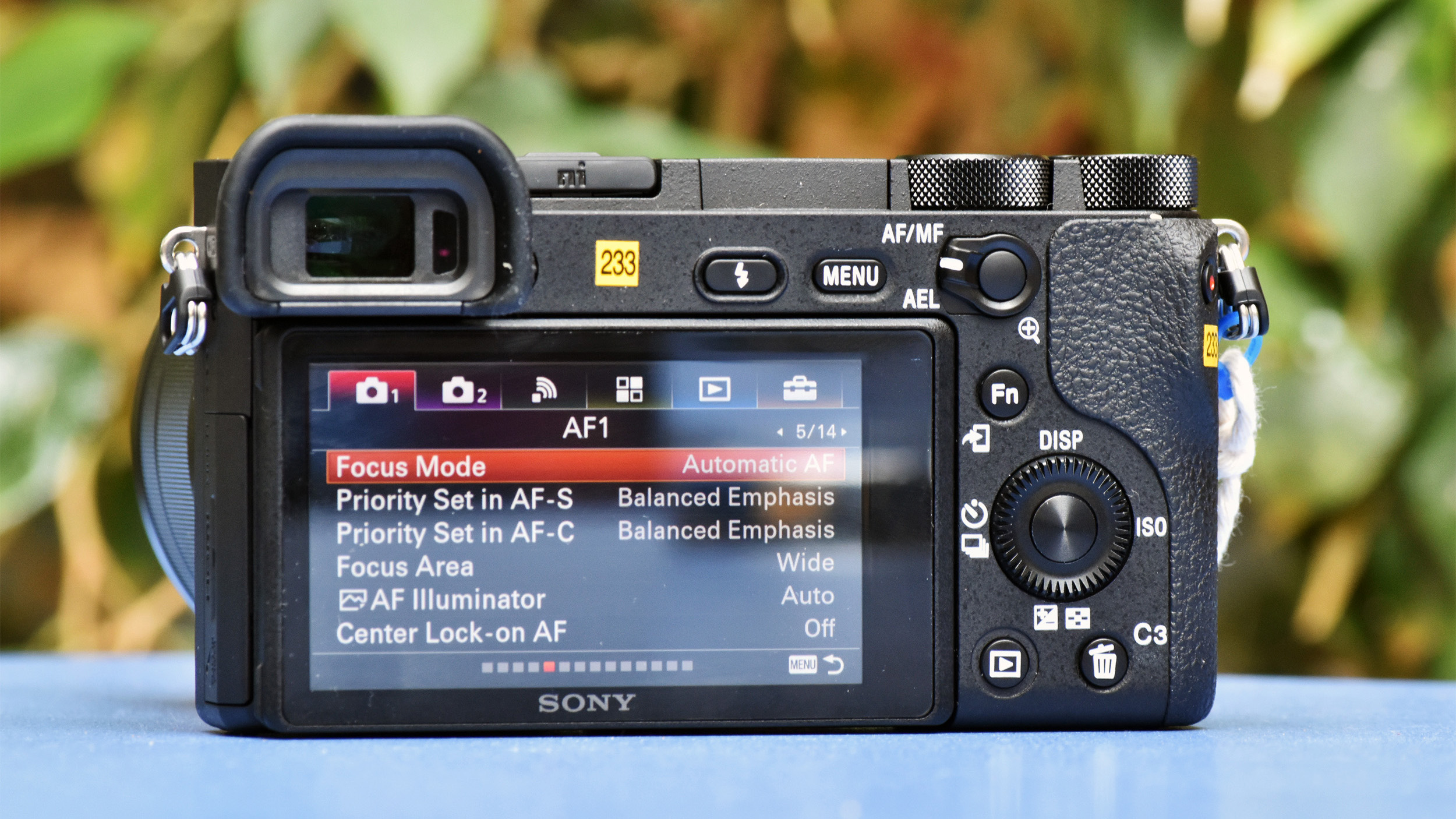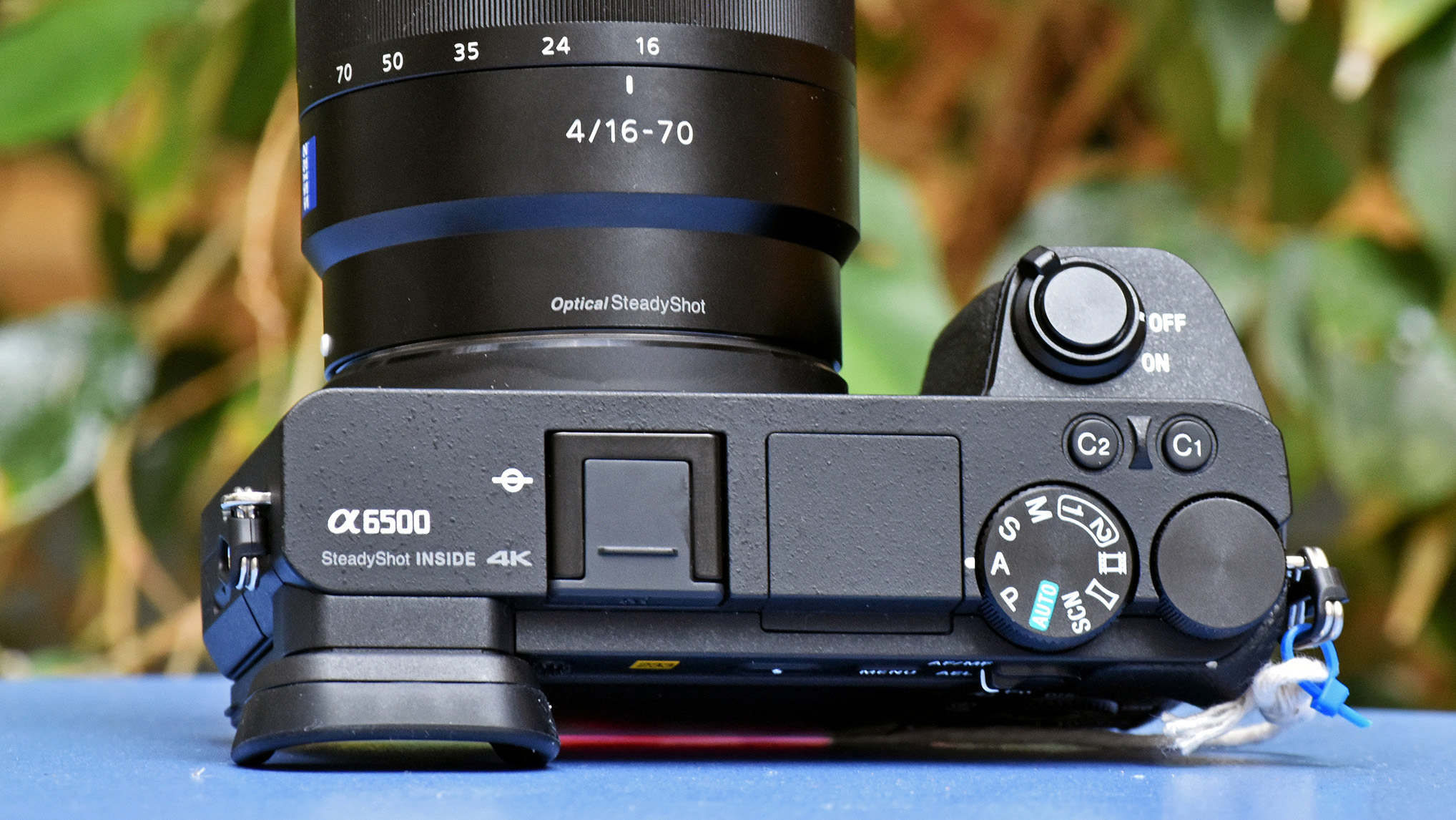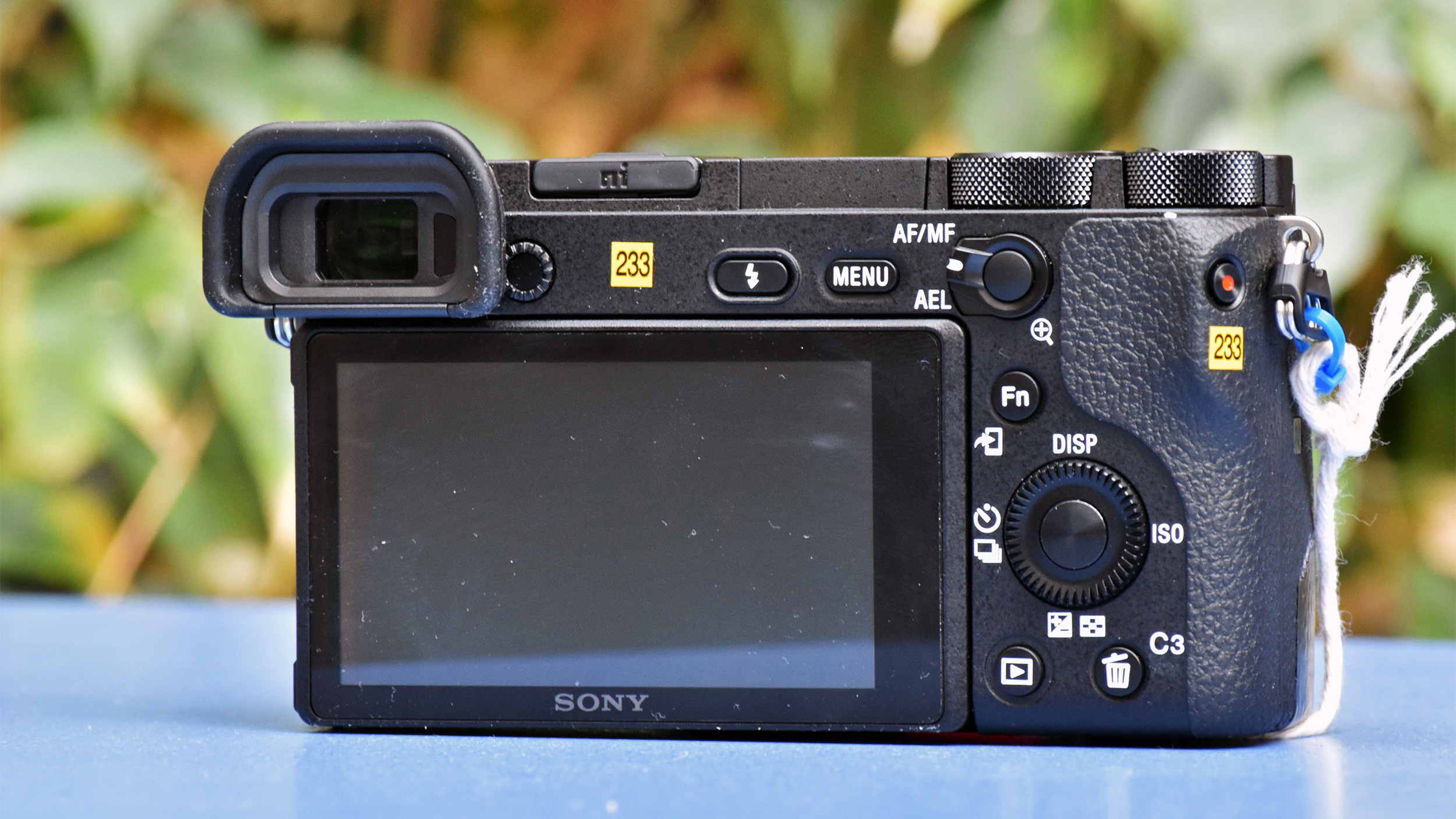It was only in February that Sony announced the A6300 as its APS-C E-Mount flagship, but now it’s being upstaged by the new A6500. Designed to blur the boundary between Sony’s APS-C lineup and its Alpha 7 full-frame range, the A6500 is a modest evolution of the A6300, though it does pack some tempting new features.
Features
- APS-C CMOS sensor, 24.2MP
- 5-axis image stabilisation
- 3.0-inch tilt-angle touchscreen, 921,600 dots
The most notable new addition is in-body 5-axis image stabilisation. This enables the same level of stabilisation as the A7 II, meaning you can now get a stabilised image with E-Mount lenses that don’t feature Sony’s Optical SteadyShot stabilisation.
The A6500’s in-camera system corrects for pitch, yaw, horizontal, vertical and roll movement, and Sony claims it delivers a 5-stop shutter speed advantage. Given the physical space this stabilisation system requires inside the camera body, it’s no mean feat that Sony has managed to cram this tech into a body that’s the same 38.5mm depth as the A6300.

The second notable new addition for the A6500 is something sorely missed on the A6300: a touchscreen. As well as the usual image review advantages of being able to swipe through shots and double-tap to zoom in, you can now tap to focus when in Live View for faster focus point adjustment.
The system can also be utilised when composing shots using the excellent 2,359k-dot EVF (donated by the A6300) – just drag a thumb across the monitor to move the focus point – and you get the same touch-focus advantages when shooting video.
Build and handling
- Shutter with a lifespan of 200,000 actuations
- Magnesium alloy construction
- 453g
Further enhancements designed to make the A6500 a genuine alternative to the Alpha 7 include a new high-durability shutter with a rated lifespan of 200,000 actuations, a new magnesium alloy body that sports a larger shutter release button, and a whopping 10 customisable controls, including three dedicated custom buttons.

Sony has even tweaked the feel of the control dials used on the A6500 and added a larger grip, plus a softer eyepiece.
We couldn’t make a direct comparison with the A6300 here, but first impressions suggest the ergonomic enhancements of the A6500 are fairly subtle. The A6300 wasn’t exactly short on customisable controls, but the A6500’s deeper grip does make it noticeably more comfortable in the hand for users with larger paws. The A6500’s menu design has also been streamlined, but it’s mostly unchanged from the A6300’s interface.
Autofocus
- 425-point AF
- High-density tracking AF
- 0.05 sec AF speed
The A6500’s AF system itself is largely unchanged from the A6300, with the new camera packing Sony’s Hybrid AF tech targeted at sports and wildlife shooters. As well as typical contrast-detect AF, the A6500 features 425 phase-detection AF points that cover almost the entire sensor area, helping the A6500 achieve a quoted AF lock-on speed of just 0.05 seconds.
Performance
- 11fps burst shooting
- Buffer of up to 307 images
- BIONZ X image processor
Processing speed has been boosted though, as the A6500 has been treated to the A99 II’s potent processing engine. This gives the A6500 a burst shooting buffer of up to 307 frames when shooting at 8fps, resulting in 30 seconds of firepower.
At this speed Sony’s engineers have managed to almost entirely eliminate screen blackout during continuous capture, but if you need the fastest possible burst rate the A6500 is also capable of 11fps over 269 shots/20 seconds with continuous AF and exposure tracking, albeit with typical preview blackout.
We were given the opportunity to shoot several fast-moving subjects with the A6500, and Sony’s speed claims seem well founded. The camera is capable of extremely rapid full-resolution raw+JPEG capture with no screen blackout, and focus tracking proved very effective.

Image quality
- ISO100-51,200
- +/-5 EV exposure compensation in 1/3 or 1/2-stop increments
- Lens correction
Sony’s 24.2MP APS-C Exmor CMOS sensor delivers outstanding performance in the A6300, so it’s little surprise that it’s been carried over to the A6500.
Providing a sensitivity range of ISO100-51,200, the sensor uses an innovative design that separates the light-gathering photosites and data-transfer wiring onto individual layers, creating more space for both elements and therefore enabling greater light sensitivity and faster image processing.
Sony maintains that the A6500 should generate less noise at mid to high sensitivities though, thanks to that improved processing engine from the A99 II. We’ll have to wait until we get hold of a full production sample later in the year to test this claim.

Video
- 4K video capture
- S-Gamut/S-Log shooting
- No pixel binning
Unsurprisingly, the new camera also shares the A6300’s ability to record 4K (3840 x 2160) video, and can do so using the full sensor area to avoid cropping. If you select the Super 35mm format, the A6500 captures 6K of video data to give the final 4K output enhanced depth and detail.
New video features are few, but the A6500 does boast a new ‘Slow and Quick’ mode for video capture from 1fps to 120fps, selectable over eight speed steps and viewable in camera. The camera’s Hybrid AF system is also active during video capture, and the A6500 maintains the A6300’s ability to shoot high-bit-rate 100Mbps 4K movies and high-speed 120fps Full HD content.
Professional videographers will also appreciate the A6500’s clean HDMI output and S-Log3 gamma setting, to maximise dynamic range through colour grading in post-production.
Early verdict
While it may seem a little too soon after the A6300 for a refresh, the tweaks and refinements in the A6500, not forgetting the welcome addition of a touchscreen interface, only enhance the appeal of what is a very capable enthusiast mirrorless camera.